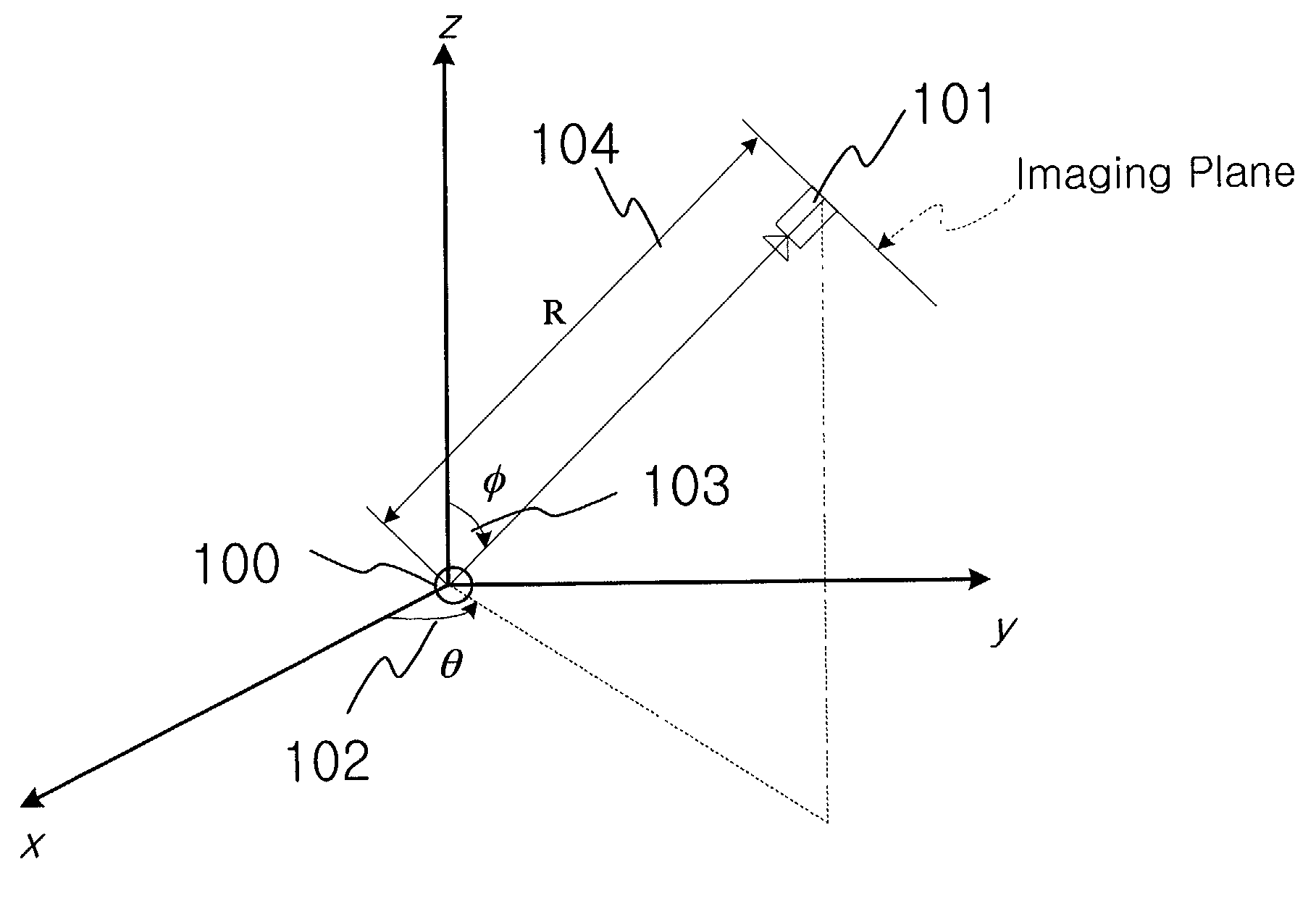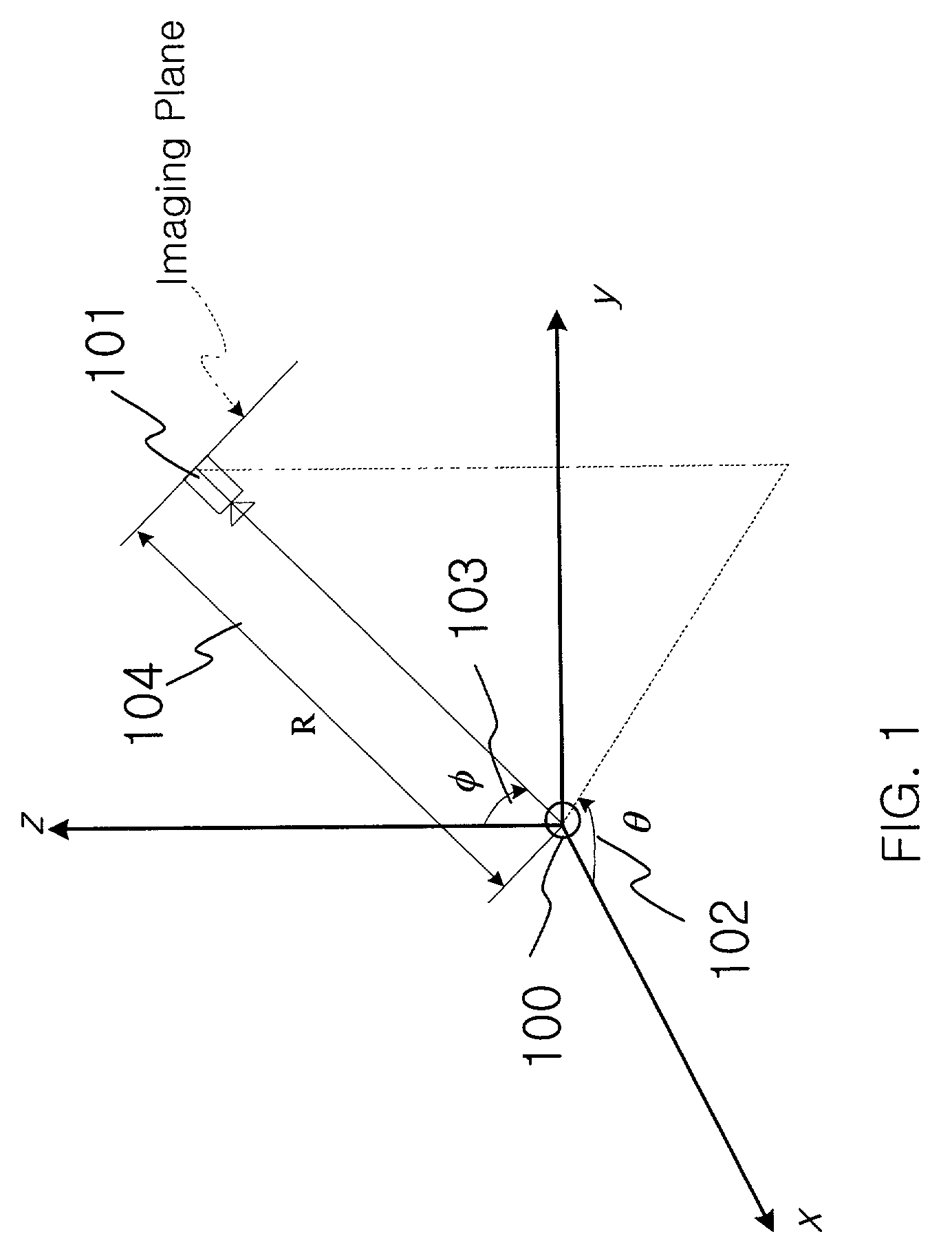Method and apparatus for visualization and manipulation of real 3-D objects in networked environments
- Summary
- Abstract
- Description
- Claims
- Application Information
AI Technical Summary
Benefits of technology
Problems solved by technology
Method used
Image
Examples
Embodiment Construction
A. IMAGE ACQUISITION DEVICE
[0021]FIG. 1 shows the geometry of the image acquisition device. The object 100 is placed in the center (origin) and the camera 101 rotates about the object to capture images at various prescribed angle θ102 and φ103 at distance R 104, where θ102 is an azimuth in the horizontal plane and φ103 is an elevation from the horizontal plane. However, in order to reproduce the image of the object at a particular view angle that the user may request, the object must be imaged from “all possible view angles”. The definition of “all possible view angles” can be realized by drawing a subset of all possible rays (“all possible view angles”) from the origin.
[0022]FIG. 2 shows a “fuzz-ball” formed by all such rays viewed together. In the figure, θ and φ are sampled as θ=2πm / 32 and φ=(0.5+n)π / 7, where m=0,1,K,31 and n=0,1,K,6. Notice that the ray spacing basically controls the viewing resolution, in the corresponding direction θ and φ. The viewing resolution determines th...
PUM
 Login to View More
Login to View More Abstract
Description
Claims
Application Information
 Login to View More
Login to View More - R&D
- Intellectual Property
- Life Sciences
- Materials
- Tech Scout
- Unparalleled Data Quality
- Higher Quality Content
- 60% Fewer Hallucinations
Browse by: Latest US Patents, China's latest patents, Technical Efficacy Thesaurus, Application Domain, Technology Topic, Popular Technical Reports.
© 2025 PatSnap. All rights reserved.Legal|Privacy policy|Modern Slavery Act Transparency Statement|Sitemap|About US| Contact US: help@patsnap.com



